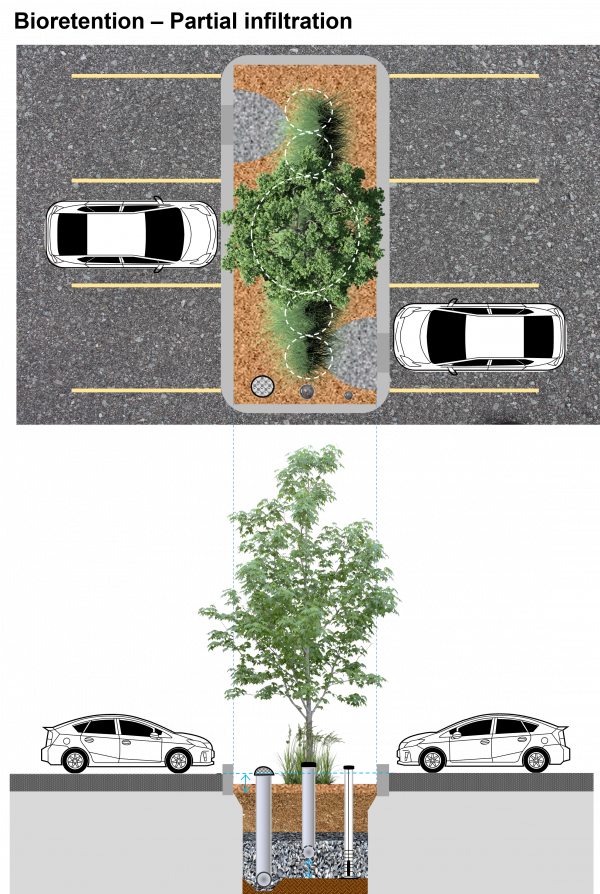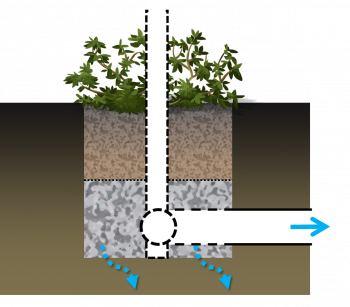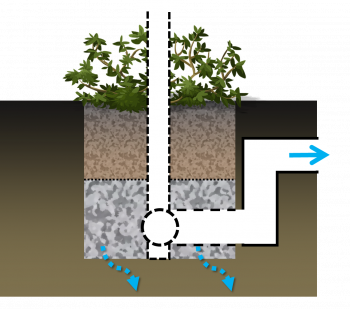Bioretention: Partial infiltration
Revision as of 19:59, 2 March 2022 by DanielFilippi (talk | contribs)

Partial infiltration bioretention cell draining a parking lot. This design variation includes an underdrain and surface overflow pipes that allow excess water to leave the practice. A monitoring well is included so drainage performance can be evaluated over its operating lifespan. For more details on this variation of a bioretention feature and others, click here for the City of Toronto's Green Streets Technical Guidelines (GSTG).,[1] Note: The following is an "image map", feel free to explore the image with your cursor and click on highlighted labels that appear to take you to corresponding pages on the Wiki.
Overview[edit]
Over soils with slow infiltration rates, it is advantageous to drain a portion of the stored water prior to any upcoming storm. This popular design choice can optimize annual water balance, mitigate peak flow rates and by ensuring water flow through, can reduce the accumulation of sodium and chlorine ions from winter salting.
Partially infiltrating bioretention with underdrain.
Partially infiltrating bioretention with anaerobic/aerobic storage zone.
Materials[edit]
Research[edit]
Bioretention: Partial infiltration volume
- ↑ City of Toronto. 2017. City of Toronto's Green Streets Technical Guidelines - Version 1.0. Schollen & Company Inc., Urban Forest Innovators, TMIG, DMG. August, 2017. https://www.toronto.ca/legdocs/mmis/2017/pw/bgrd/backgroundfile-107514.pdf

